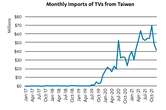In the world of product development, after learning about what kinds of progress customers want to make in their lives, successful designers build prototypes to test their early ideas. They experiment with multiple rough mock-ups that they can change easily.
Career choices benefit from experimentation, too. As we say in our book Job Moves, smart job switchers consciously hire their next job so they can make progress in their careers. The point of the prototypes isn’t to find a job at this stage. It’s about clarifying the trade-offs you’re willing—and unwilling—to make to get the progress you want. Learning is the goal here.
As you “mock up” an array of potential futures, these should range from roles you hope exist somewhere out there to those you’re actively considering to novel paths you don’t know much about but are interested in exploring. In our experience, people often want to stop with just one plausible prototype. But creating “the one” is exceedingly difficult. What single role could be perfect in every way? And it sets you up for disappointment later when real-world options don’t precisely line up with expectations and you don’t know how to make trade-offs to unlock progress.
The task is to come up with three to five exciting, well-articulated possibilities.
Brainstorm your career ‘must-haves’
Brainstorm a list of jobs that might deliver your critical “must-haves.” To get started, imagine scenarios in which you would have:
- the same role, but at a different company
- a promotion within your company
- a role in a new function
- a role in companies of varying sizes and maturity (small versus large, start-up versus established)
- a role in a new industry
- a role you’ve always thought could be interesting but you’ve never explored
To help build out each prototype, you can use our worksheet.
To check how accurate your prototypes are, you’ll line up informational interviews with people in jobs like the ones you’ve mocked up. Start by tapping your existing connections. Reach out to mentors and others in your professional and social networks to see if they know people who hold roles like those you’ve prototyped. You can also search LinkedIn to find individuals who hold these roles.
Having identified people you want to talk to, you will ideally ask a shared contact to introduce you, which increases the likelihood that the person you want to talk to will agree to a conversation. Or, you can also write to people out of the blue and ask them to talk. You might be surprised at how often people will say yes to an informational conversation with no strings attached—one that allows them to share their own story with somebody who has similar interests.
However you reach out, make it clear that you’re not going to ask them for a job. You just want to learn more about what they do. Otherwise, they may hesitate to connect, especially if they don’t know you. Keep your request simple, but be clear about what you’d like—thirty to forty-five minutes of their time.
For the purposes of career prototyping, informational interviews should be hyper-focused on what people do on a daily and weekly basis and how those activities pertain to the energy drivers and assets that are important to you.
Questions to ask yourself
Systematically drill into the things that you know drive your energy. For example, one important driver for a person we coached, Clara, was feeling that she was making an impact. For her, that involved building relationships. So she asked a series of questions about patient interaction during an informational interview with an emergency medicine physician assistant (EMPA):
- To what extent do you interact directly with patients and their family members?
- Do you follow up with patients after they are discharged?
- How much time do you spend with patients on average?
Clara learned that the EMPA generally did not have ongoing relationships with patients. She was responsible for triage and acute treatment but often never saw the patient again—or even learned what happened next in their treatment. The EMPA’s own desire for impact was satisfied, but that didn’t align with what Clara wanted. Although she wasn’t surprised by this in retrospect, the conversation clarified something for her. The physician assistant role—one that she knew well in the context of a rehab clinic—could align very differently with her drivers in other settings, such as emergency medicine.
Don’t settle for surface-level answers to your questions. Press for details and examples to get a clear picture of whether the work involves the things that give you energy. If someone says their job is creative—and creativity is important to you—ask them what that looks like in their day-to-day work. Then explain what it means to you. Perhaps it’s about being free from the traditional constraints and processes in a workplace so that you can do your job in innovative ways. Then ask: Does the person you’re interviewing have a job that allows them to be creative in that way?
Follow a similar script for assets: Which skills, experiences, and credentials do your prototyped roles actually leverage and value? You may be surprised at the answers you get in your interviews. Clara thought she would need a PhD, for example, to be hired as a science writer. She was pleasantly surprised to learn that her master’s degree in neuroscience was more than credible.
You can also have your interviewee walk you through a typical day or week in their job and talk about how that work schedule intersects with other aspects of their life, such as family time and personal interests. Bring their attention back to what matters to you—as in, “In a typical week, how many opportunities do you have to engage with people beyond your immediate team?” or “When during the day are you able to put your head down and focus quietly on your own tasks, without interruptions?” Homing in on the calendar like this gets at what people actually do rather than what their title says they are.
Success in these interviews doesn’t mean finding the right fit. It means gaining insight into the energizers, capabilities, and trade-offs you would likely encounter in each job.
From the book Job Moves: 9 Steps for Making Progress in Your Career by Ethan Bernstein, Michael B. Horn, and Bob Moesta. Copyright Ó 2024 by Ethan Bernstein, Michael B. Horn, and Bob Moesta. Reprinted by permission of HarperCollins Publishers.








No comments